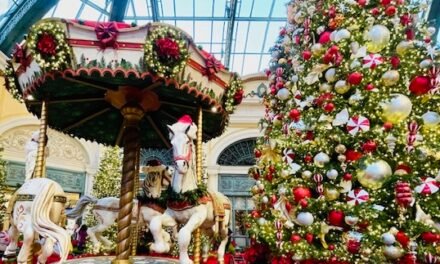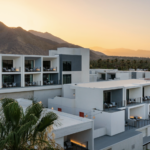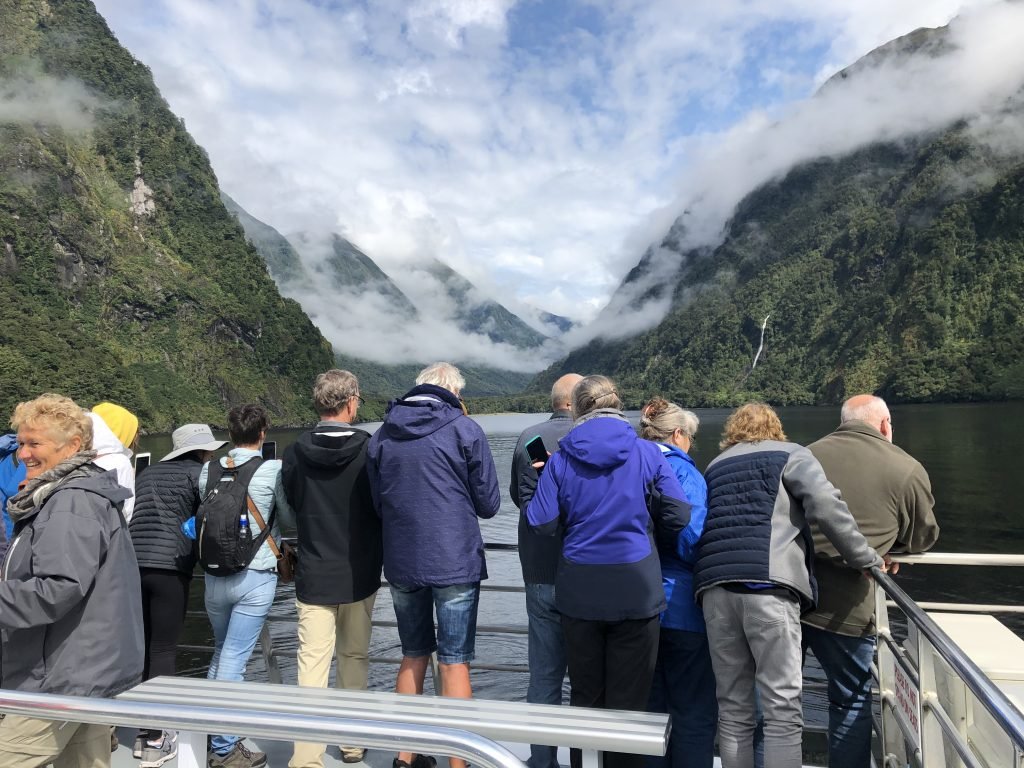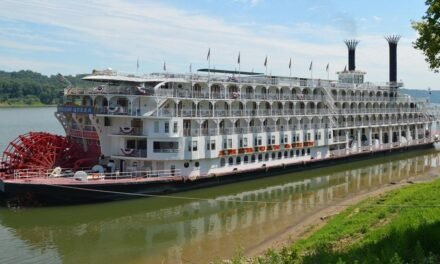
Discover a Hiker’s Paradise on New Zealand’s South Island
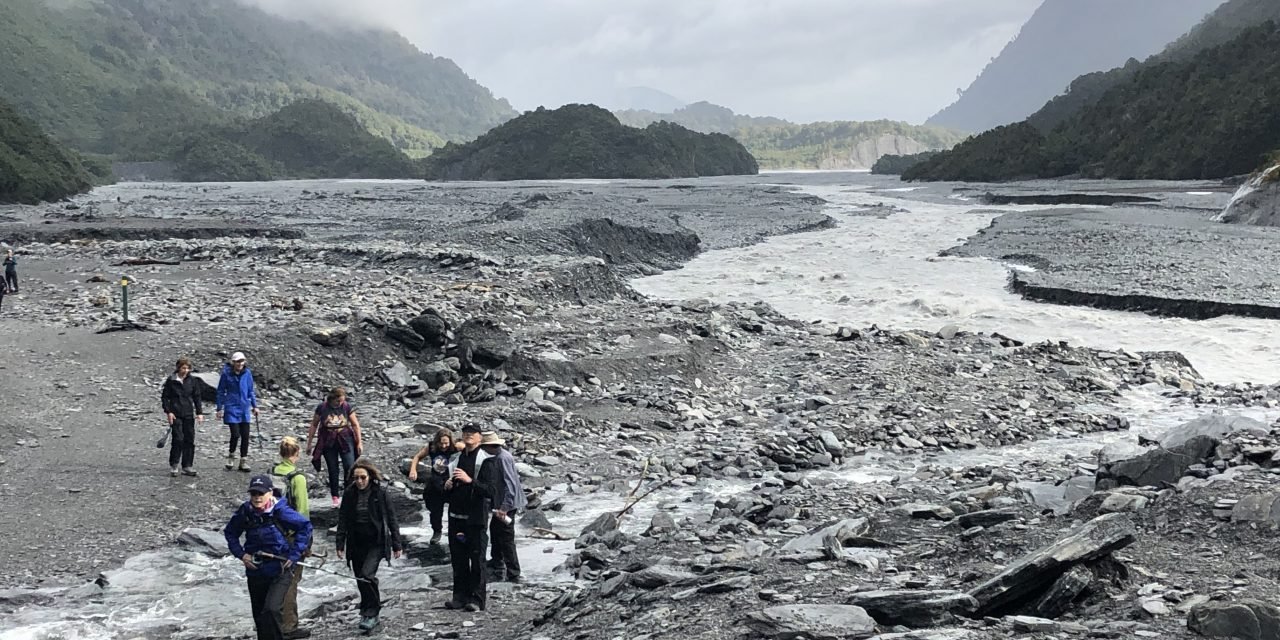
Travel has always been an active pursuit for me. I typically shy away from coach tours, as I feel they relegate me to being an armchair traveler, who mostly watches the scenery go by outside a window. They restrict me to primarily being a passive observer, having little interaction with the exciting world beyond the narrow viewpoint provided.
When I travel, I want to fully explore a place and engage with the landscape and its people, using all of my senses. The stimulation I crave from traveling needs to satisfy me, not only mentally and emotionally, but also physically. Thus, I seek opportunities that promote discovery via such means as walking, hiking, cycling, paddling, and more. And if I’m active, there’s a bonus. I can eat whatever I want sans the guilt!
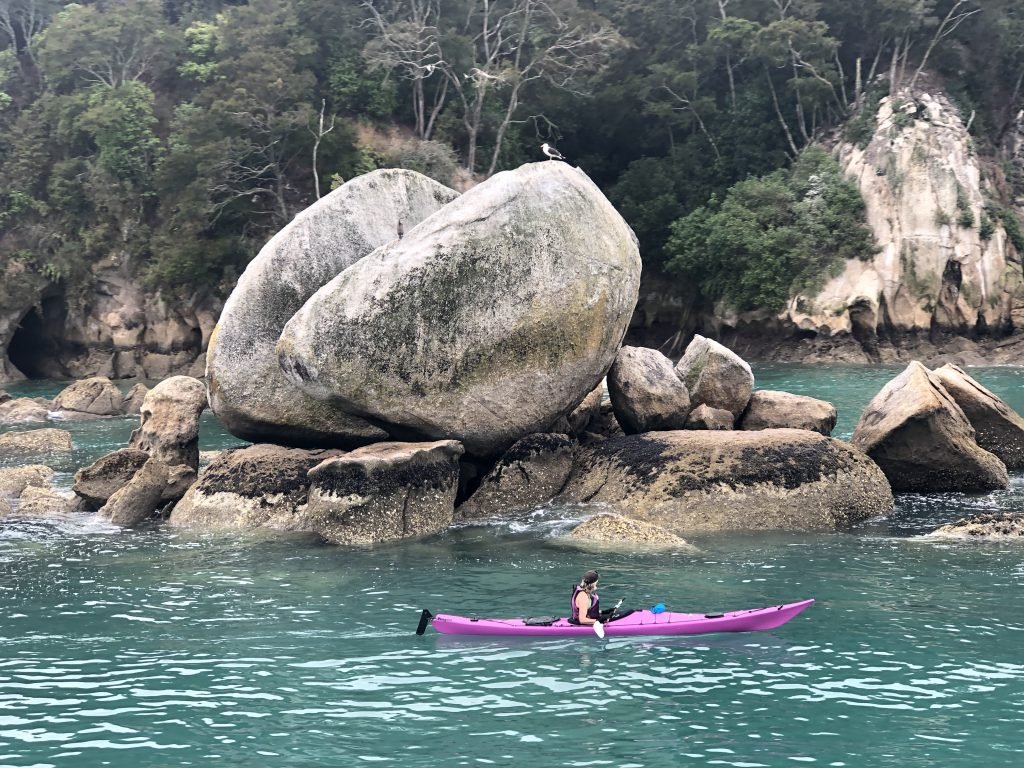
Over the years, I’ve traveled solo, as well as with my husband, other family members and friends. And on occasion, I’ve joined a small group tour of complete strangers. These types of tours can often prove very rewarding, provided you get to share the journey with kindred souls. They’re also easy from a planning aspect, as typically the tour company tends to most if not all of the details.
New Zealand, the country that people often describe as being “down under and off to the right,” is by reputation, a destination that exudes outdoor adventure. I planned to explore the North Island on my own, but chose to join an all-inclusive, two-week hiking trip of the South Island with Active Adventures New Zealand.

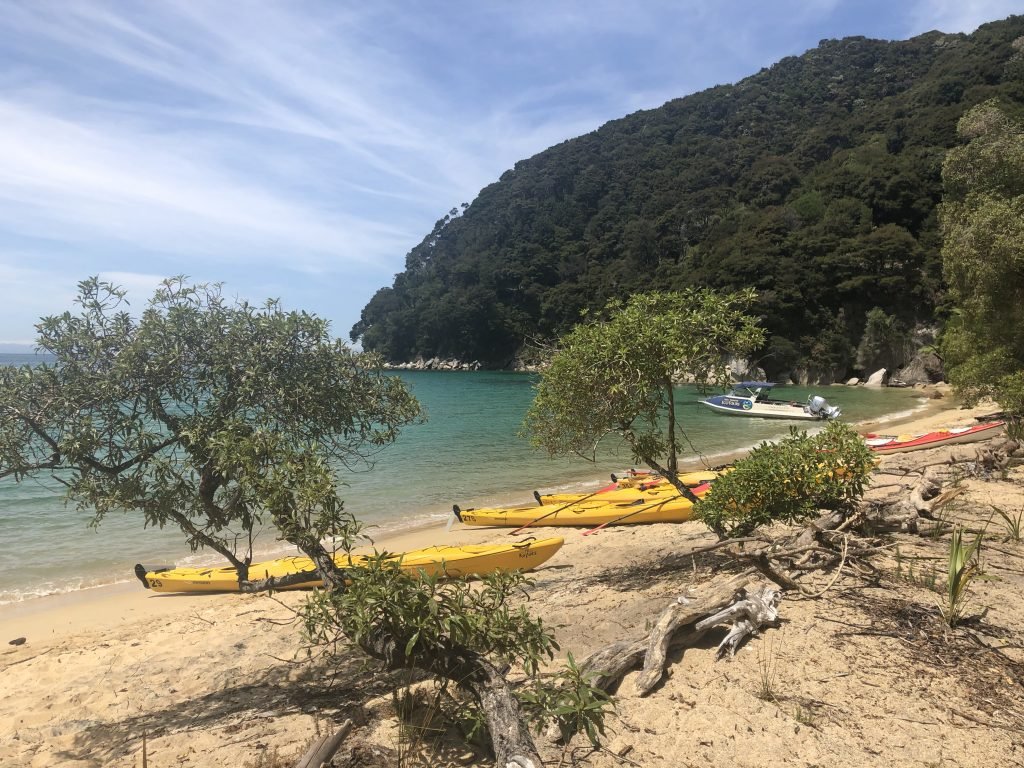
Active Adventures has an excellent reputation in the industry for crafting unique itineraries that encourage clients to get out and hike amid all the splendor the country has to offer. And there’s a trip for everyone, from uber hikers to those interested in moving at a more moderate pace. The company also takes pride in its highly-qualified guides, good food, top-of-the-line equipment, attention to detail, commitment to sustainability and emphasis on safety first, not to mention its consistently stellar client reviews.
The Active Adventures’ “Kiwi” trip I took balanced daily hikes with other pursuits like kayaking, wine tasting, wildlife cruises and visits to art galleries and craft workshops. And there were also opportunities for beach time, star-gazing and soaking in the hot tub. It was the perfect mix of activity and relaxation.
The pace was constant, due to the amount of ground we covered, but not frenetic, so I never felt overly exhausted and unable to appreciate all the incredible sights. And the hikes weren’t insane. Typically, distances ranged from a very manageable three to six plus miles a day, though elevation and type of hiking surface could up the ante in regard to the level of challenge. Some days we did two hikes. There were also options to accommodate those who wished to do less mileage. And in some cases, you could go further or do an additional walk if you felt extra energetic.
The goal was not to regard the hikes, or “tramps,” as the Kiwis call them, as missions that had to be completed in record time. Rather, we were encouraged to view them as opportunities to take in the spectacular views, learn about the fauna, geology and history of a place, observe wildlife and revel in the good fortune of being in this wondrous destination.
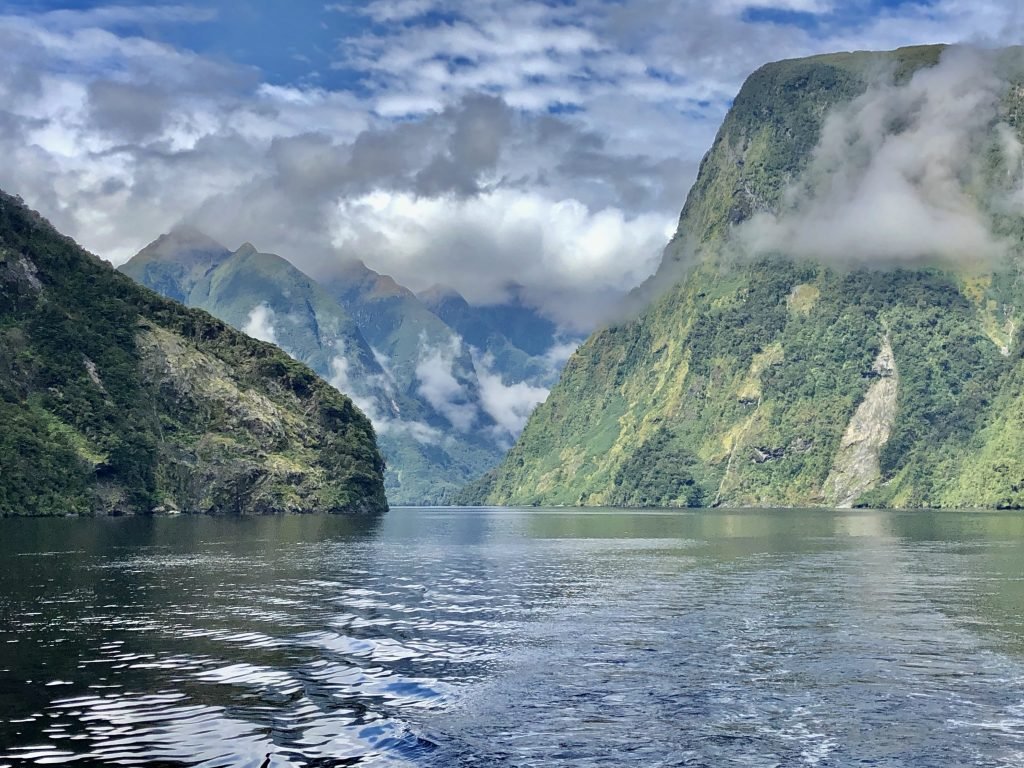
Doubtful Sound
Our group of thirteen hailed from the U.S. and Canada, and for the majority, this was our first foray to New Zealand. Though we all had different backgrounds, our commonality was a love and respect for nature and the environment, along with a passion for travel and a keen interest in other cultures. I felt fortunate to be with people who were cooperative, flexible and open-minded. There were no prima donnas in the bunch, no complainers nor high-needs individuals. Everyone went with the flow, even when the itinerary had to be slightly altered at one point due to extreme weather conditions. The group understood that there are some things that can’t be controlled, especially when it comes to Mother Nature.
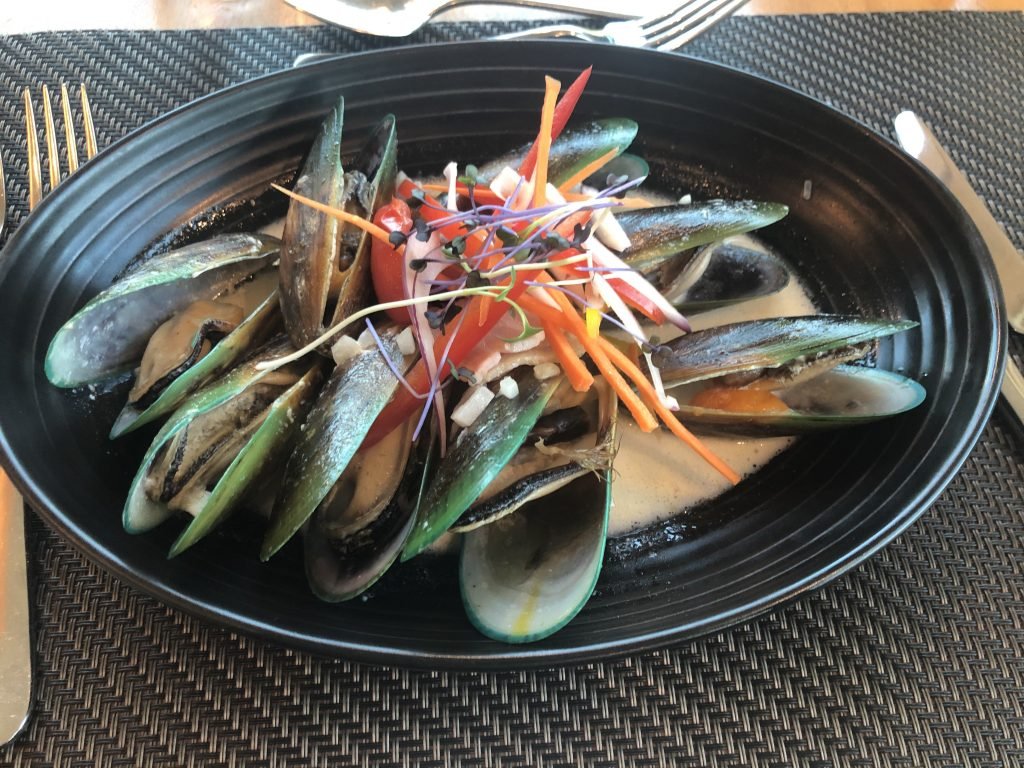
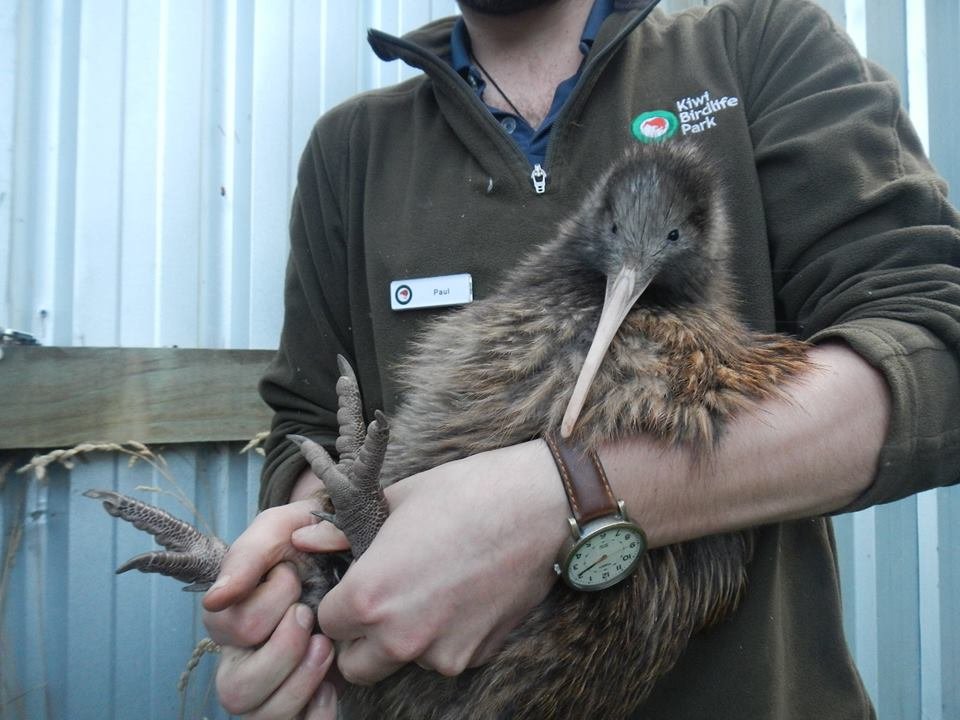
Image courtesy of Kiwi Wildlife Park
Our group was also lots of fun. We each had a good sense of humor, and at the get-go, we showed signs of melding together well. This doesn’t always happen with groups. It can take time and even then, bonds don’t necessarily form. Our group had its class clowns, bookish sorts, artistes, amateur naturalists, storytellers, historians, singers and yes, even dancers! We were all eager to contribute our thoughts and views, life stories and past adventures, whether we were in the vehicle, hiking on the trails, eating meals together or imbibing at happy hour. And we were a very curious bunch, who felt comfortable asking questions of each other and our guides.
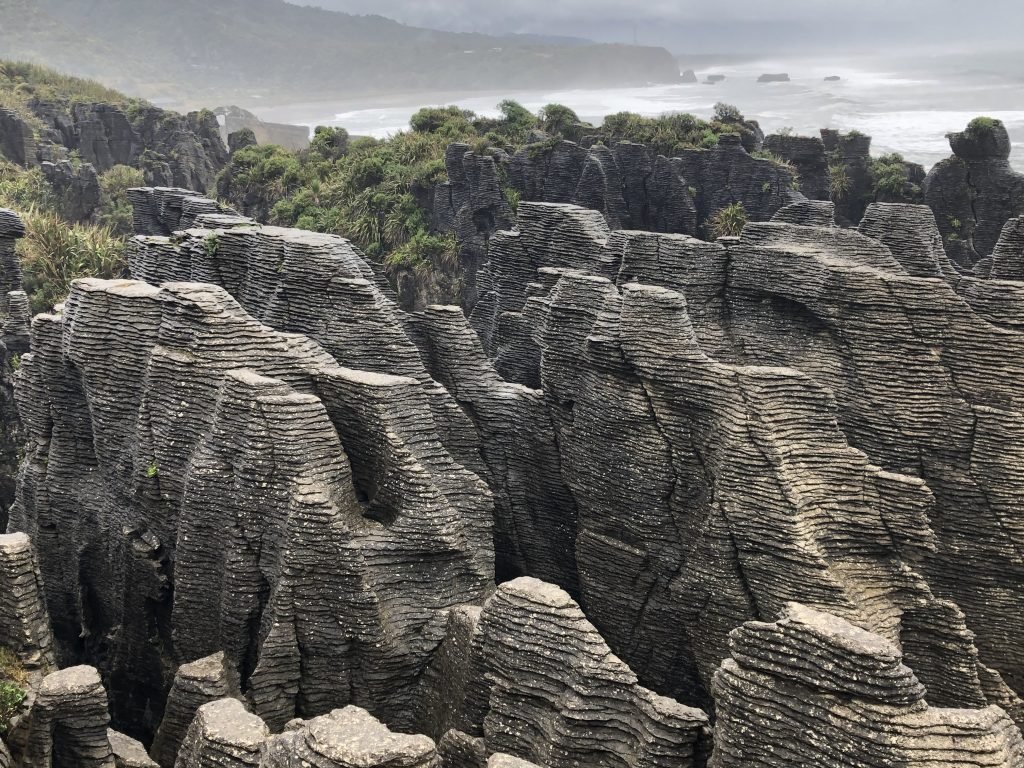
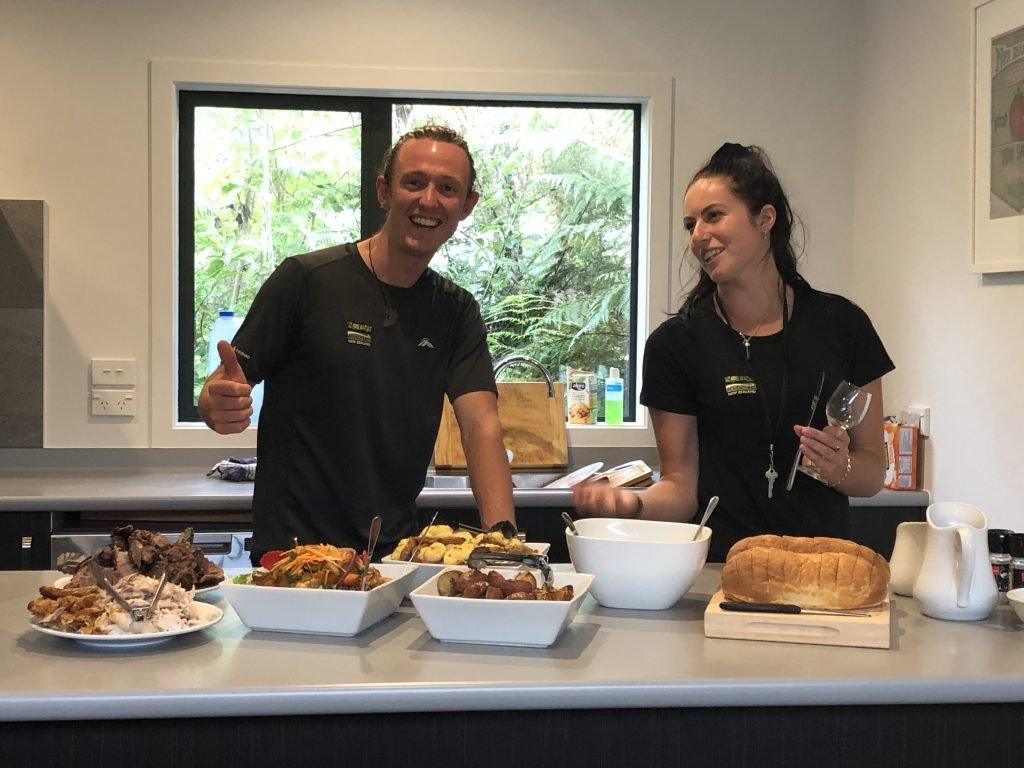
Pim and Astrid in the kitchen
It’s not only the composition of the group, however, that’s important, but also the guides that helm the trip. In this case, we scored big with Pim and Astrid. We were in more than capable hands with this pair, and they made juggling multiple roles look easy. They were knowledgeable and always willing to share information, as well as personable and upbeat. Pim and Astrid took great pleasure in showing off the beauty of their country and even more joy in watching us experience it. Additionally, they listened and solicited feedback from the group at each juncture. And wow, did they shine in the kitchen!
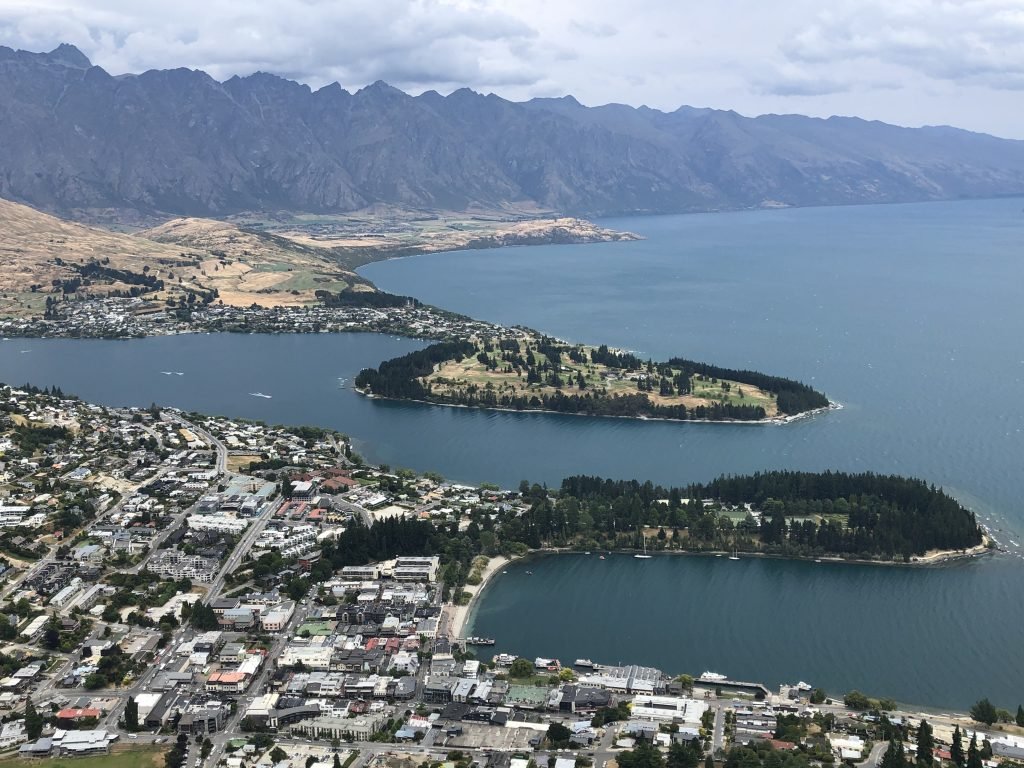
There were so many highlights on this trip, it’s hard to note them all. But, that’s a good problem to have. The South Island is majestic, with a diversity of scenery that leaves visitors in a state of jaw-dropping awe.
We began our adventure in Christchurch, a vibrant city that offers plenty of activities to explore on your own, either pre or post trip. You may recall that this town was hit by the massive Canterbury earthquakes in 2010 and 2011, which caused much devastation to the infrastructure. Progress has been made to regenerate the city with many recovery projects underway or already completed, but there are still numerous buildings in various states of ruin, such as the town’s centerpiece, Christchurch Cathedral. A visit to Quake City is a must if you’re interested in learning more about the science of earthquakes and the events that transpired on those fateful days.
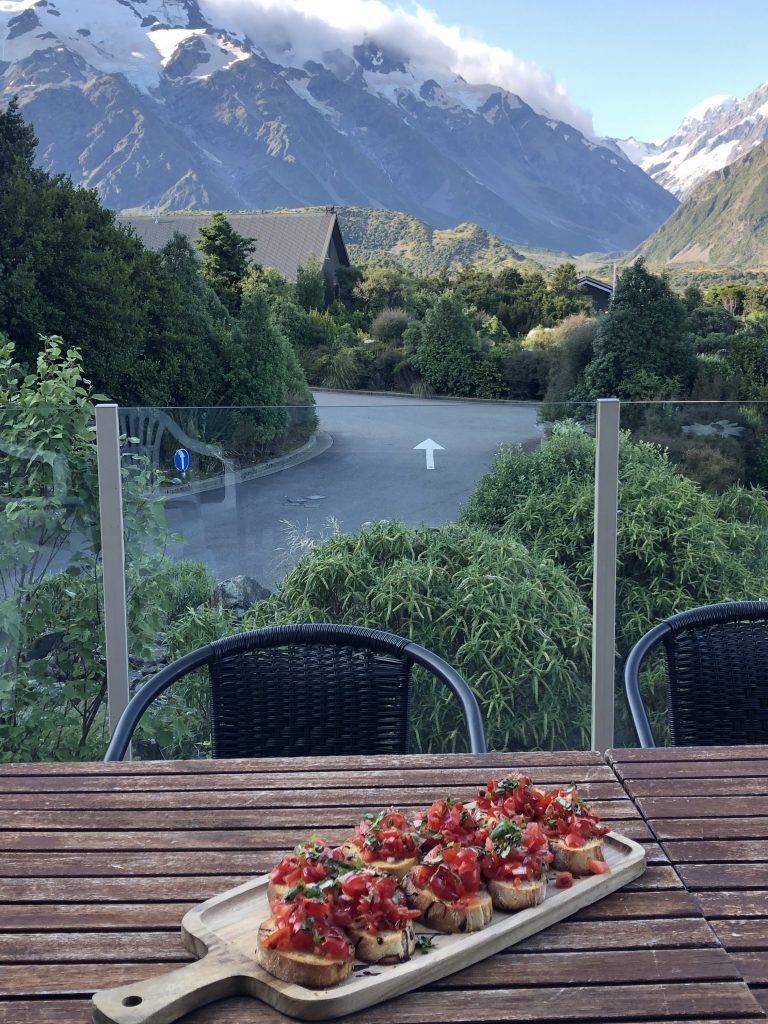
Another must-see attraction is the International Antarctic Center. As one of only five “gateway cities” to Antarctica, Christchurch has played a special role in exploration to the icy continent since the early 1900s. The center gives visitors the opportunity to learn more about Antarctica in an interactive environment. Check out the Antarctic Storm Chamber to experience polar conditions (a teeth chattering seventeen degrees, buffeted by a zero degrees wind chill machine), come face-to-face with blue penguins and meet some handsome rescue huskies. You can also take a joyride on a Hägglund all-terrain amphibious Antarctic vehicle and watch a film in the multi-sensory 4D theater.
One of my favorite activities in Christchurch was punting on the Avon. You’ll glide gently along the Avon River through the Christchurch Botanic Gardens in a small, flat-bottomed boat, poled by a guide dressed in Edwardian clothing. This iconic sightseeing ride is a unique and tranquil way to experience a lovely part of the city.

Astrid leads the way
Once the tour began, the hikes took center stage. New Zealand prides itself on having an extensive, well-marked and maintained trail system and it delivers big on these aspects. There’s no shortage of memorable hikes, whether you want to walk along the coastline, through the rainforest or in the mountains.
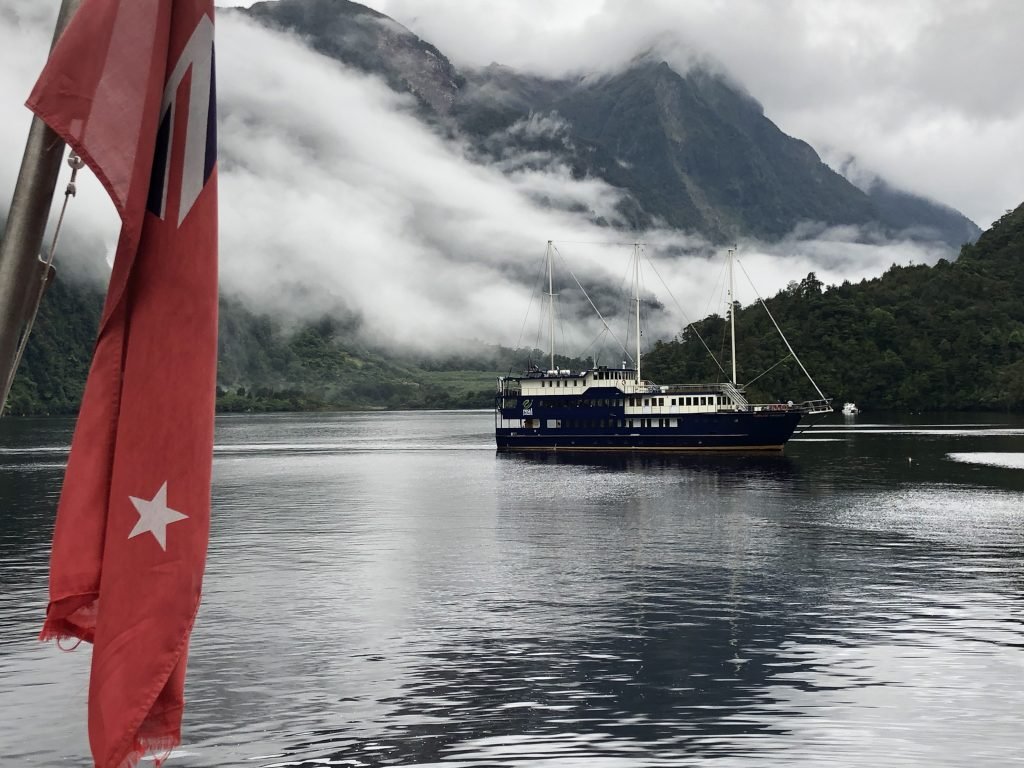
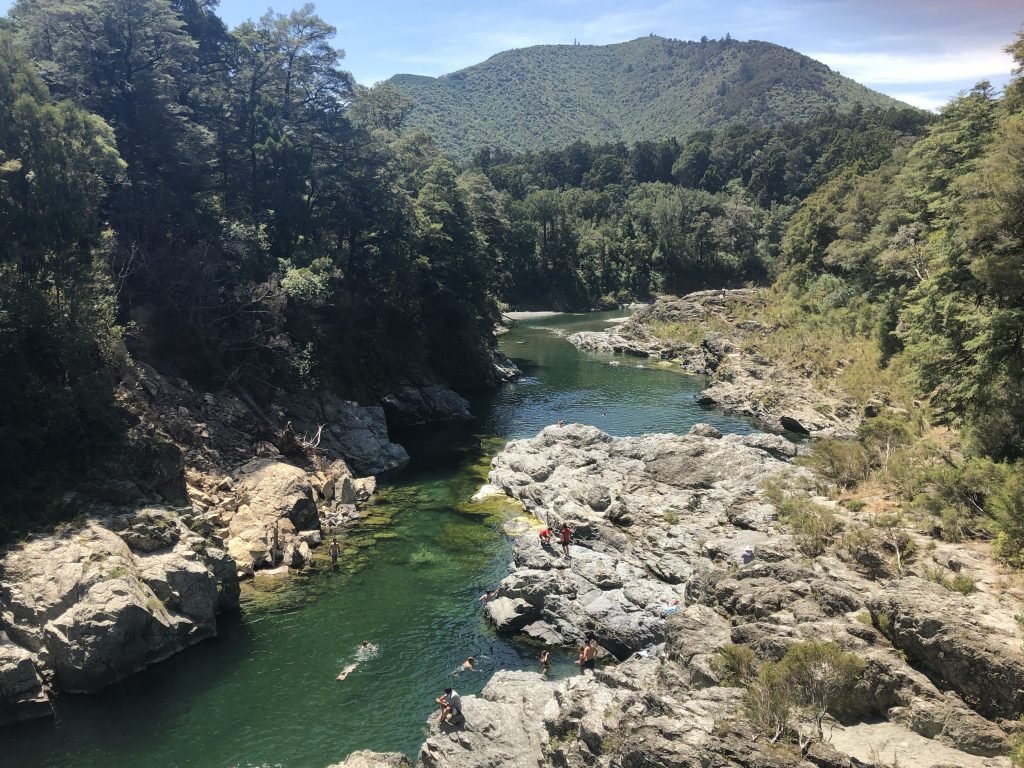
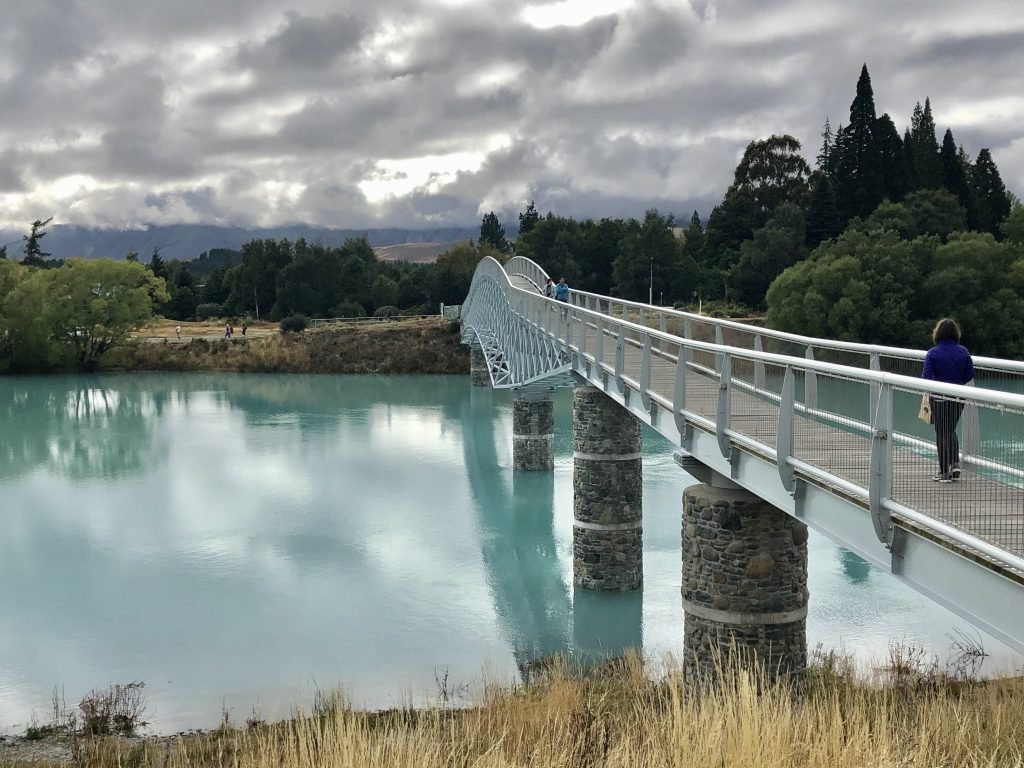
One day, we hiked on Kaikoura Peninsula to see a fur seal colony. This area is often referred to as the “Serengeti of the South Pacific,” as it is also home to a vast array of marine wildlife, including dolphins, whales, shearwaters, petrels and albatross. The views from the headlands along the coastline, backed by the Seaward Kaikoura Range, were spectacular.
Another day, we walked a part of the Pelorus Track, which took us through a verdant forest alongside the Pelorus River. During our walk, we learned about the navigational use of the ponga, or silver fern. The Maori would place this plant on a trail and at night, it would gleam, pointing the way for others to follow.
There’s an historic bridge along the Pelorus track and a popular swimming area that served as an opportune place for our group to cool off after our hike. The river itself had a starring role in Peter Jackson’s “The Hobbit: Desolation of Smaug.”
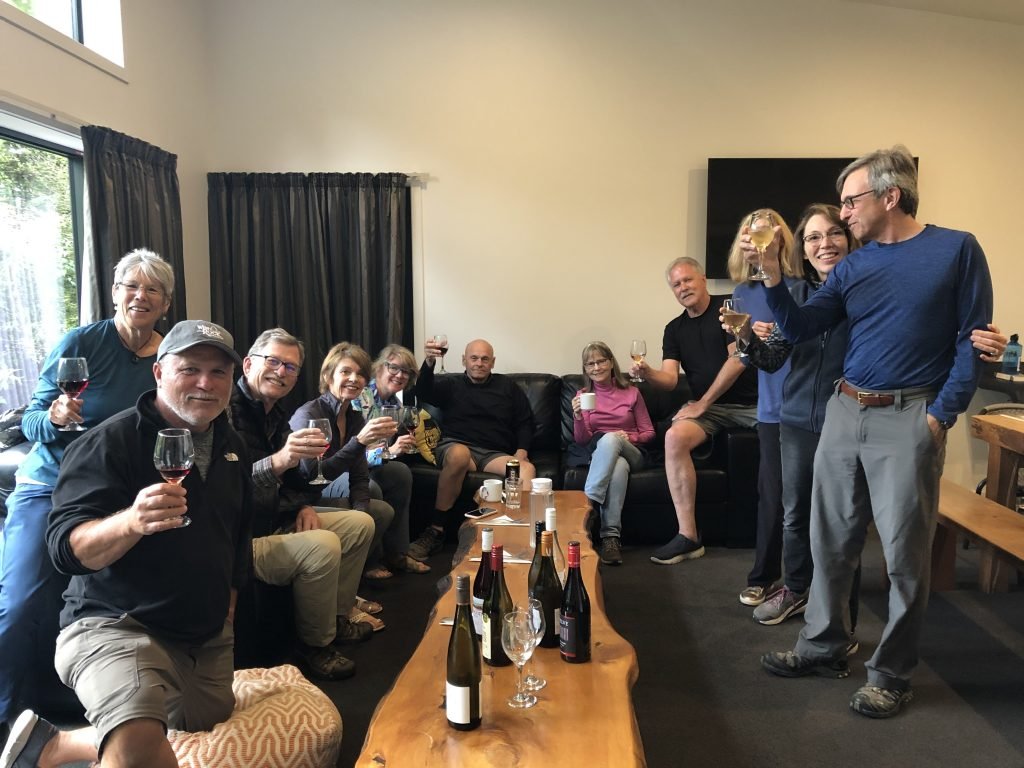
We then headed to Abel Tasman National Park to hike a section of the spectacular Abel Tasman Coast Track, one of New Zealand’s most popular Great Walks. These walks comprise a set of the country’s premiere scenic tracks, developed and maintained by the Department of Conservation.
To reach the Abel Tasman Coast Track, we took a water taxi through the crystal-clear sea, around hidden coves, to a golden sand beach. The hike went through a coastal forest bedecked with ancient plants, such as the rimu, totara and rata. The latter is known as the South Island Kiwi Christmas tree. Peek-a-boo views of the water tantalized us and an unspoiled beach greeted us at the end of the trail.
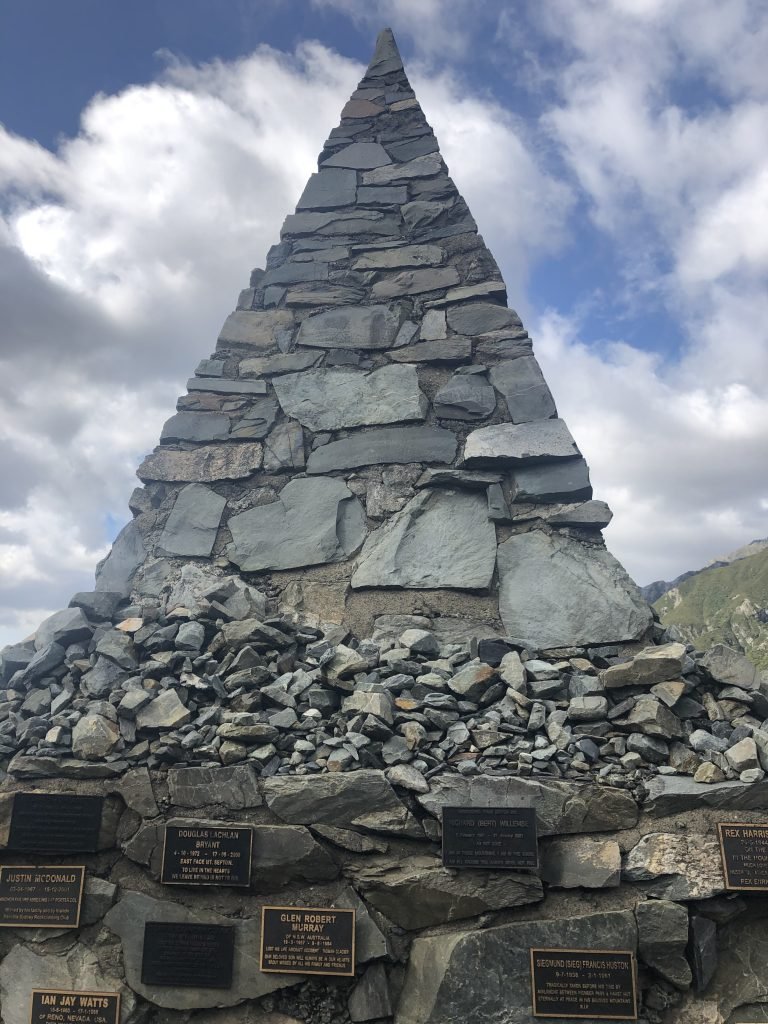
Aoraki Mt. Cook Memorial
In Paparoa National Park, we hiked a section of the Paparoa Track, which is also one of the country’s Great Walks. The trail took us up the spectacular limestone Pororari River gorge and down along the Punakaki River. At times, I felt like I was in the land of the giants, as all the plants were huge. It was a “Honey I Shrunk the Kids” kind of experience with the flora on steroids.
In nearby Punakaiki, we went to see the famous Pancake Rocks and blowholes. These formations are made of limestone, which have been sculpted through a weathering process and appear layered like a stack of pancakes. If you time your visit with high tide, the sea surges into the caverns and booms violently through the blowholes. It’s a wild and exhilarating scene that reminded me Mother Nature really is the boss.
The Truman Track, rated one of New Zealand’s finest short walks, took us through a dense native forest that led out to a pebbled bay with massive sandstone cliffs. The primordial nature of the wooded environment created a Jurassic Park-like setting and I kept expecting T-Rex to emerge from behind the trees.

A civilization stop at Hokitika turned out to be the perfect place to do some souvenir shopping. Hokitika is a charming seaside town full of galleries and pounamu carving workshops. Pounamu, or greenstone, is a type of jade found on New Zealand’s South Island. The stone is highly valued by the Maori and its carvings play an important role in Maori culture.
Glaciers are among some of the scenic highlights in New Zealand. There are actually 3,000 glaciers in the country with 700 on the North Island and the rest on the South. One of our hikes took us to the Franz Josef Glacier. We walked along the Waiho River bed up a valley to the face of this massive ice sheet. Though impressive, it was also sobering to see the glacier’s extreme recession – nearly a mile in the last decade alone. Guides used to be able to lead tourists straight on to the glacier by foot. Now, flying in on a helicopter is the only way to climb on the glacial ice.
We also hiked the popular and picturesque Hooker Valley Track to the terminus of Hooker Glacier in Aoraki Mt. Cook National Park. Aoraki Mt. Cook is New Zealand’s highest peak and is the focal point of the Southern Alps. Its Maori name, Aoraki, means “Cloud Piercer,” which comes from an ancient myth. Legend has it that the gods turned the crew of a wrecked canoe into hills. One of the children, Aoraki, was sitting on the chief’s shoulders and thus became the tallest of the promontories. In 1851, the mountain was given its English moniker in honor of explorer Captain James Cook.
Mt. Cook, which actually has three peaks, is 12,272 feet tall. A trio of local men were the first to reach the summit in 1894. Though it has since been scaled numerous times over the years, this peak is still one that climbers do not take lightly. Over 140 people have lost their lives on its slopes. A memorial attests to these sobering statistics.
The park has an excellent visitor center, with displays on the natural and human history of the area, including some excellent exhibits on the area’s mountaineering scene. The building is an attraction in itself, featuring a large picture window that looks out to Aoraki Mountain.
Nearby is the Sir Edmund Hillary Alpine Center, a multimedia museum dedicated to the man regarded by many as the greatest New Zealander of all time. Hillary was a familiar sight around Mt. Cook, as this was where he prepared for his and Tenzing Norgay’s successful summit of Mt. Everest in 1953.
An unprecedented amount of rain and road washouts caused us to abort the highly anticipated Milford Sound cruise in Fiordland National Park. Fortunately, however, we were still able to explore the park via a boat ride through Doubtful Sound. Lesser known and less visited, due to being more remote than its more famous sister Milford, Doubtful Sound is arguably by many to be equally as dramatic. Though I confess, its name is a bit off-putting!
Story has it that when Captain James Cook got close to the entrance of the sound back in 1770, he decided to call the place, “Doubtful Harbor.” He feared he would not be able to sail his ship back out and thus resisted entering the inlet and instead continued on around the island.
Also of interest to note is that technically, as a post-glacier valley flooded by the sea, this is a fjord, not a sound. But, when early sealers and whalers came, they renamed Cook’s harbor Doubtful Sound and it stuck.
Doubtful Sound is a secluded, vast wonderland, which teems with wildlife. It contains one of the ten marine reserves in Fiordland National Park, which is listed as a UNESCO World Heritage Site. At three million acres, Fiordland is the largest of the national parks in New Zealand. It is also one of the wettest spots in the country, averaging over 200 days of rain a year.
To reach Doubtful Sound takes some effort. It involves a short boat trip across Lake Manapouri, followed by a bus ride over epic Wilmot Pass through Fiordland’s rainforest and finally into the Sound, where your cruise vessel awaits.
The cruise exceeded expectations, as the pristine wilderness scenery was striking. In the beginning, the clouds hung low and there was a magical, mystical quality to the atmosphere. Countless waterfalls cascaded from towering granite giants that cast their reflection in the water. And numerous small, uninhabited islands in the sea created an aura of brooding desolation. But then, bits of blue sky began to appear and the peaks started to reveal themselves in all their glory. As we plied the waterways, we spotted fur seals and their pups basking on the rocks and even had a pod of dolphins playfully swim around our boat. Throughout the trip, an onboard naturalist provided informative and entertaining commentary.

Marmite is all the rage in New Zealand
Within Fiordland are several Great Walks; one of which is the Kepler Track. This multi-day trek was carefully planned to show walkers all the best features of Fiordland, from its moss-draped beech forests and huge mountain ranges to its glacier-carved valleys, river flats and limestone formations. We hiked two separate sections of this trail. One of the days it was dripping wet, and although hiking in the rain is not my first choice, I must admit it gave the forest a moody essence that had its own special beauty.
The trip’s itinerary allowed for one completely free day, which was in Queenstown. The break, which came a little over halfway through our journey, was welcome. For many, it provided a chance to catch up on laundry and sleep, but for others, such as myself, this was not an easy place to completely wind down due to the many exciting distractions.
The self-styled “adventure capital of New Zealand” and birthplace of bungy jumping, Queenstown is a heart-pumping playground. In addition to throwing yourself off a bridge, you can do every imaginable adrenaline-inducing activity you can think of, including paragliding, ziplining, jet boating, whitewater rafting, skydiving, luging and more. Or take it down a notch and go fishing, cruise Lake Wakatipu on an historic steamship and visit a sheep farm. Make sure to hop on the Skyline Gondola for fantastic views of the surrounding cinematic backdrop of mountains and lakes.
This tiny resort town also has a cosmopolitan dining scene with plenty of restaurants, cafes and watering holes. And for those who want to do some retail therapy, there are stores and boutiques galore. Stroll along the colorful waterfront, as well as through the lovely botanic garden and take a tour of the Kiwi Birdlife Park. The latter is home to over twenty species of native birds and reptiles; each a part of a managed conservation program. And if you want to see a real kiwi, this is the place.
Kiwi are flightless, tailless, long-beaked, nocturnal birds, that are rarely seen and highly-protected. A Maori legend is oft-used to explain how the kiwi lost its wings. According to the myth, the god of the forest, Tanemahuta, was concerned about his children, the trees, because the bugs and birds were eating away at them. He consulted his brother, Tane-hokahoka, god of the birds, who asked his children to come down from the forest roof and live on the floor. All the birds refused, citing various excuses. Only the kiwi agreed to sacrifice its wings to live on the forest floor. As a reward, Tane-hokahoka made him the most well-known and best-loved bird of all, which is why the kiwi is New Zealand’s national sweetheart.
At the Birdlife Park, the clock is reversed so visitors can see, by day, these interesting birds in a naturalistic night-time setting. Specialized lighting effects and infra-red cameras let you observe the kiwis foraging, grooming and going about their nightly activities. And for all things kiwi, attend the Kiwi Encounter, where one of the keepers will entertain you with a host of interesting facts about these weird and wonderful birds.
You’ll find as you travel around the country, that Kiwis, the name also used to call New Zealanders, are crazy about their birds. At times, I felt I was on an Audubon tour, as the guides pointed out each bird with particular reverence, from the Kia and the Tui to the Kiteru and the Kereru. Sometimes they were difficult to spot, as they blended in so well with the environment.
Birds get star-studded treatment because there’s just not that many animals in the country. These islands are so far from any other landmass that most creatures found everywhere else don’t exist here. For instance, most mammals. There are no native land mammals in New Zealand except for the Lesser Short-tailed Bat. But, there are other species that have been introduced over time. Unfortunately, a number of these creatures have wreaked havoc on the ecosystems, leading to the decline in population of various native birds. To combat this problem, the nation announced a plan to eradicate, in particular, all invasive rats, short-tailed weasels and possums by 2050.
Accommodations during the trip ranged from basic to upscale, depending on location. In some places, it’s just not possible to find top-notch properties, as you’re in the middle of nowhere and the choices are limited. But, on a trip like this, you don’t spend much time in your room. At the end of the day, you really just need the creature comforts of a decent bed and a hot shower. Some of the properties of note, either for their facilities, amenities, or dramatic settings, included the White Morph, Punakaiki Resort, Rainforest Retreat, Lake Ohau Lodge and the Crowne Plaza.
When it came to food, there was no shortage of good meals. Astrid and Pim were masters at putting together delectable picnic lunches with spreads that included such fare as smoked salmon, salads, fresh veggies, quiche, cheeses, fruits, hearty breads, hummus and a host of other interesting dips.
Most of the dinners were in restaurants, where we were able to choose from the menu, though a few of the meals were prepared by our guides. This gave Astrid and Pim the opportunity to show off their culinary talents and mastery of the grill.
Being a pescatarian, I was delighted with all the fish options, including South Island salmon, crayfish, green-lipped mussels, gurnard, snapper, sand flounder and of course, the proverbial fish and chips, and seafood chowder. For carnivores, New Zealand lamb and venison reign supreme.
I also became quite the fan of pies, a New Zealand staple that’s regarded as ready-made “cabinet food.” These are the savory kind of pies, stuffed with meat and/or veggies and cheese, which you can take away for an easy-to-eat snack or light meal.
I never, however, acquired a taste for either Marmite or Vegemite, the yeast-based spreads that hail from Britain and Australia. Many Kiwis are fond of either or both, and use them in sandwiches and atop crackers and toast. In my opinion, the spreads have an off-putting smell and their salty and bitter taste is unappealing. Our guide, Astrid, directed us to use just a tiny amount with lots of butter to make it palatable. Sorry, Astrid, but no matter how much butter I used, the stuff was still inedible!
Those with a sweet tooth will find much to enjoy with such delights as Afghan cookies (cornflakes inside a cookie or “biscuit” covered in chocolate with a nut on top), Banoffee (layered concoction of banana, caramel, vanilla cream and chocolate pieces), Pavlova (meringue-based dessert topped with fruit and whipped cream, named after the Russian ballerina Anna Pavlova), and one of my favorites, Hokey Pokey ice cream. The latter, which is prolific around the country, is basically vanilla ice cream mixed with chunks of homemade honeycomb.
Good food deserves good wine, and there’s no shortage of good vino in New Zealand. The country’s extended growing season, its breezy, cool climate and the grapes’ ability to ripen at a slow, steady pace create ideal conditions for viniculture. And though the country only makes one percent of the world’s wine, it draws international acclaim that far outweighs its size.
The Marlborough Wine Region is the largest winemaking area in the country, boasting over 7,000 wineries on 80,000 acres. The region is known for its high-quality Sauvignon Blanc, Pinot Noir, Chardonnay, Riesling and Pinot Gris, among others.
On the tour, our group was fortunate to stop at Forrest Cellar Doors, a family-owned winery on an idyllic park-like setting, that grows fourteen varieties of grapes and produces twenty-five kinds of wine. We sampled a variety of wines, each with great integrity and purity of flavor. Suffice to say, we ended up drinking New Zealand wines with all our meals, which undoubtedly fueled the lose-your-inhibition, impromptu, sing-alongs and dance jams!
If you go:
Active Adventures offers a variety of fully-guided, all-inclusive, small-group trips to bucket-list destinations in New Zealand, Europe, the Himalayas, South America and Africa. activeadventures.com/newzealand






